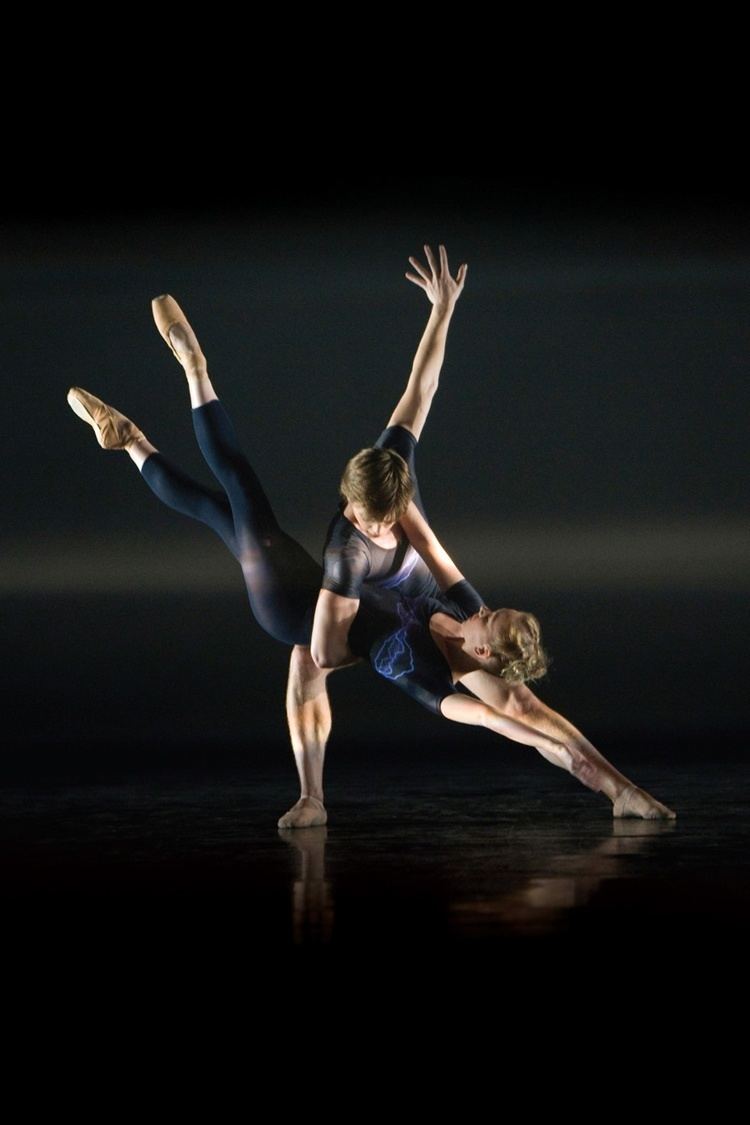Year founded 1946 (1946) Phone +44 121 245 3500 Founded 1947 | Director Laureate Sir Peter Wright Founder Ninette de Valois | |
 | ||
Awards Laurence Olivier Award for Best New Dance Production Nominations Laurence Olivier Award for Outstanding Achievement in Dance Profiles | ||
Birmingham Royal Ballet (BRB) is one of the three major ballet companies of the United Kingdom, alongside The Royal Ballet and the English National Ballet. Founded in 1946 as the Sadler's Wells Theatre Ballet, the company was established under the direction of John Field, as a sister company to the earlier Sadler's Wells company, which moved to the Royal Opera House. The new company remained at Sadler's Wells for many years, becoming known as the Sadler's Wells Royal Ballet. It also toured the UK and abroad, before relocating to Birmingham in 1990, as the resident ballet company of the Birmingham Hippodrome. In 1997, the Birmingham Royal Ballet became independent of the Royal Ballet in London. As a resident company, Birmingham Royal Ballet has extensive custom-built facilities, including a suite of dance studios, the Jerwood Centre for the Prevention and Treatment of Dance Injuries and a studio theatre known as the Patrick Centre. In 2002, the need for Birmingham Royal Ballet to have its own school led to a new association with Elmhurst School for Dance, which is now its official ballet school.
Contents
Birmingham royal ballet making the tempest
History
In 1926, the Irish-born dancer Ninette de Valois founded the Academy of Choreographic Art, a dance school for girls. Her intention was to form a repertory ballet company and school, leading her to collaborate with the English theatrical producer and theatre owner Lilian Baylis. Baylis owned the Old Vic and Sadler's Wells theatres and in 1925 she engaged de Valois to stage dance performances at both venues.
Sadler's Wells reopened in 1931 and the Vic-Wells Ballet and Vic-Wells Ballet School were established in premises at the theatre. These would become the predecessors of today's Royal Ballet, Birmingham Royal Ballet and Royal Ballet School.
In 1939, the company lost its link with the Old Vic theatre and, in 1940, Sadler's Wells theatre was bombed during World War II. These events forced the company to begin touring the country, becoming known as the Sadler's Wells Ballet. The company did return to Sadler's Wells theatre, where it stayed until 1946, when the company was invited to become the resident ballet company of the newly re-opened Royal Opera House in Covent Garden. The company relocated to the opera house the same year in 1946, with their first production at the venue being Ninette de Valois' staging of The Sleeping Beauty.
Following the relocation of the company the school was relocated to its own premises in 1947 and a sister company was established to continue performances at Sadler's Wells, called Sadler's Wells Theatre Ballet. This sister company would become the predecessor of today's Birmingham Royal Ballet. The first Artistic Director of the Sadler's Wells Theatre Ballet was John Field, who was later made co-director of the Royal Ballet and also worked as artistic director of La Scala Theatre Ballet and English National Ballet.
In 1955, Sadler's Wells Theatre Ballet temporarily lost its link with Sadler's Wells theatre and relocated to the Royal Opera House as a touring unit of the main company.
In 1956, a Royal Charter was granted for both companies and the school and they were subsequently renamed the Royal Ballet, Sadler's Wells Royal Ballet and the Royal Ballet School.
The Sadler's Wells Royal Ballet returned to Sadler's Wells theatre in 1970, whilst continuing to tour the country. The first indication that the company would leave London came in 1987, when the company was invited to become the resident ballet company at the Birmingham Hippodrome theatre. Consequently, the company relocated to Birmingham in 1990, being given its current name Birmingham Royal Ballet.
Sir Peter Wright remained as the company's Artistic Director and held the post until his retirement in 1995, when the current Artistic Director, David Bintley was appointed. In 1997, Birmingham Royal Ballet was made independent of the Royal Ballet and ceased to be managed by the Royal Opera House.
As an independent ballet company, Birmingham Royal Ballet no longer has official links with the Royal Ballet or Royal Ballet School. To further establish its reputation as a separate entity, in 2002, it began a new relationship with the Elmhurst School for Dance, which is now its official associate school. Elmhurst is the oldest established vocational dance school in the United Kingdom, and was previously based in Camberley, Surrey. It relocated to premises in Edgbaston, Birmingham in 2004, becoming known as Elmhurst School for Dance, in association with Birmingham Royal Ballet.
